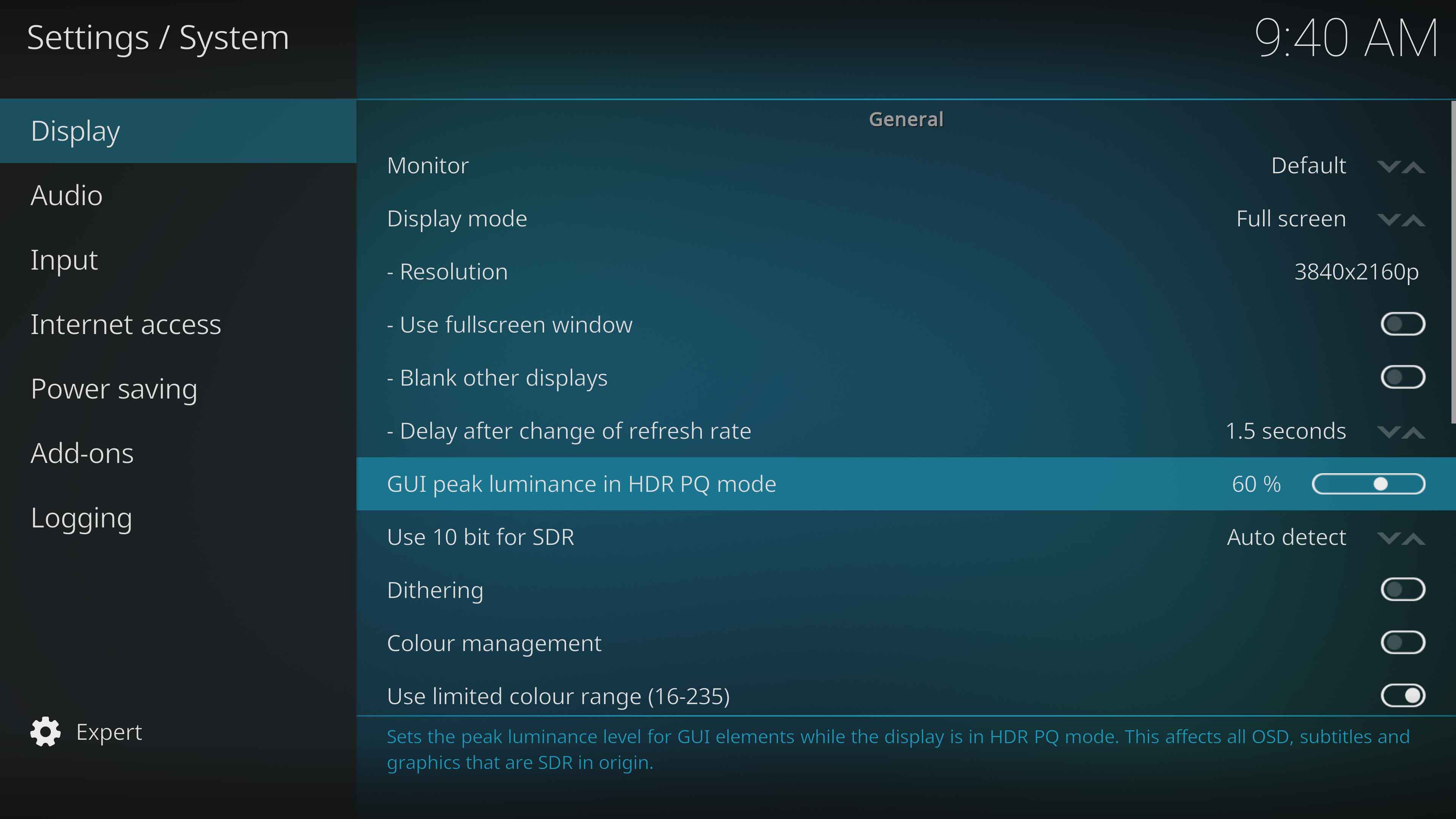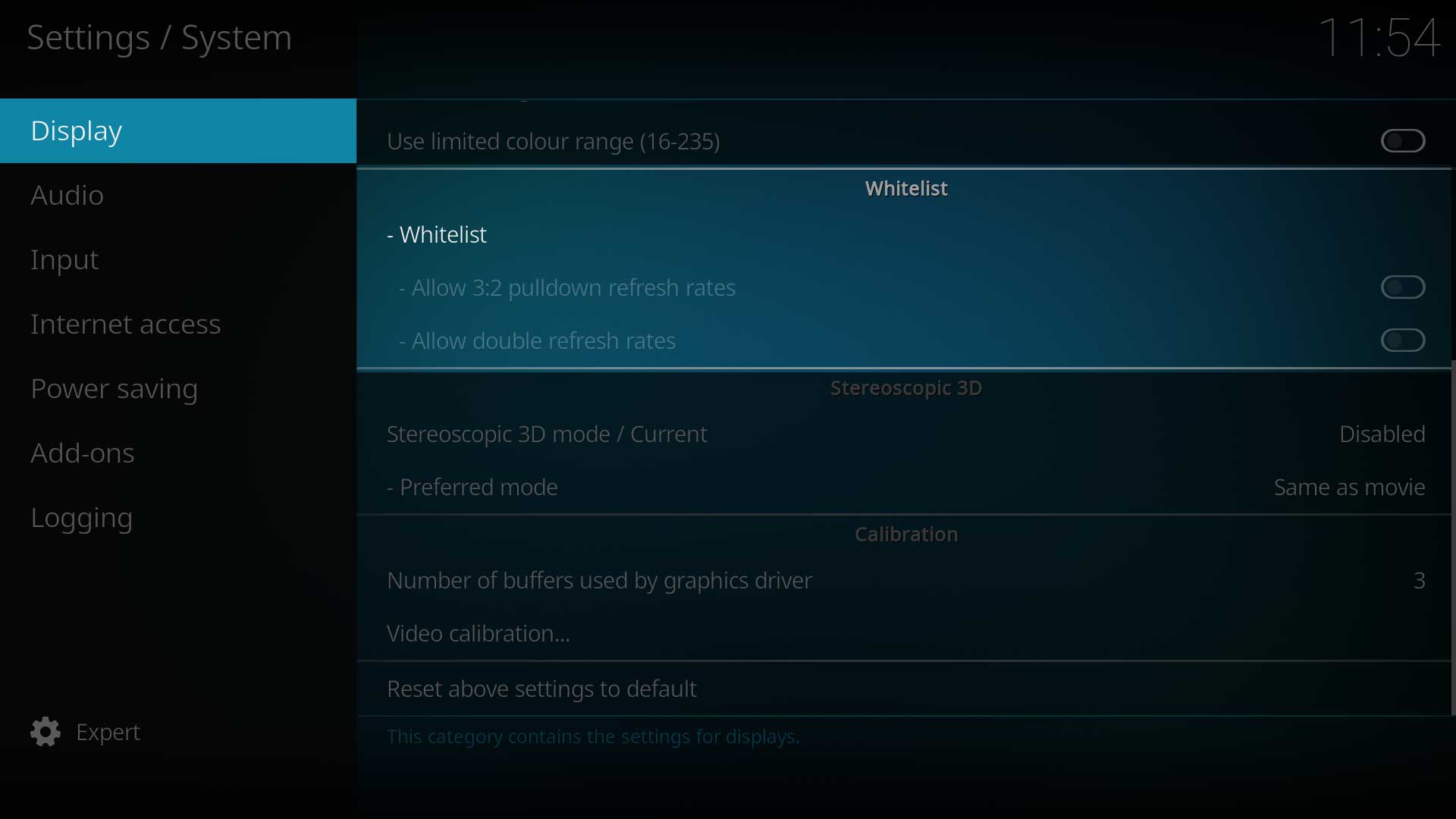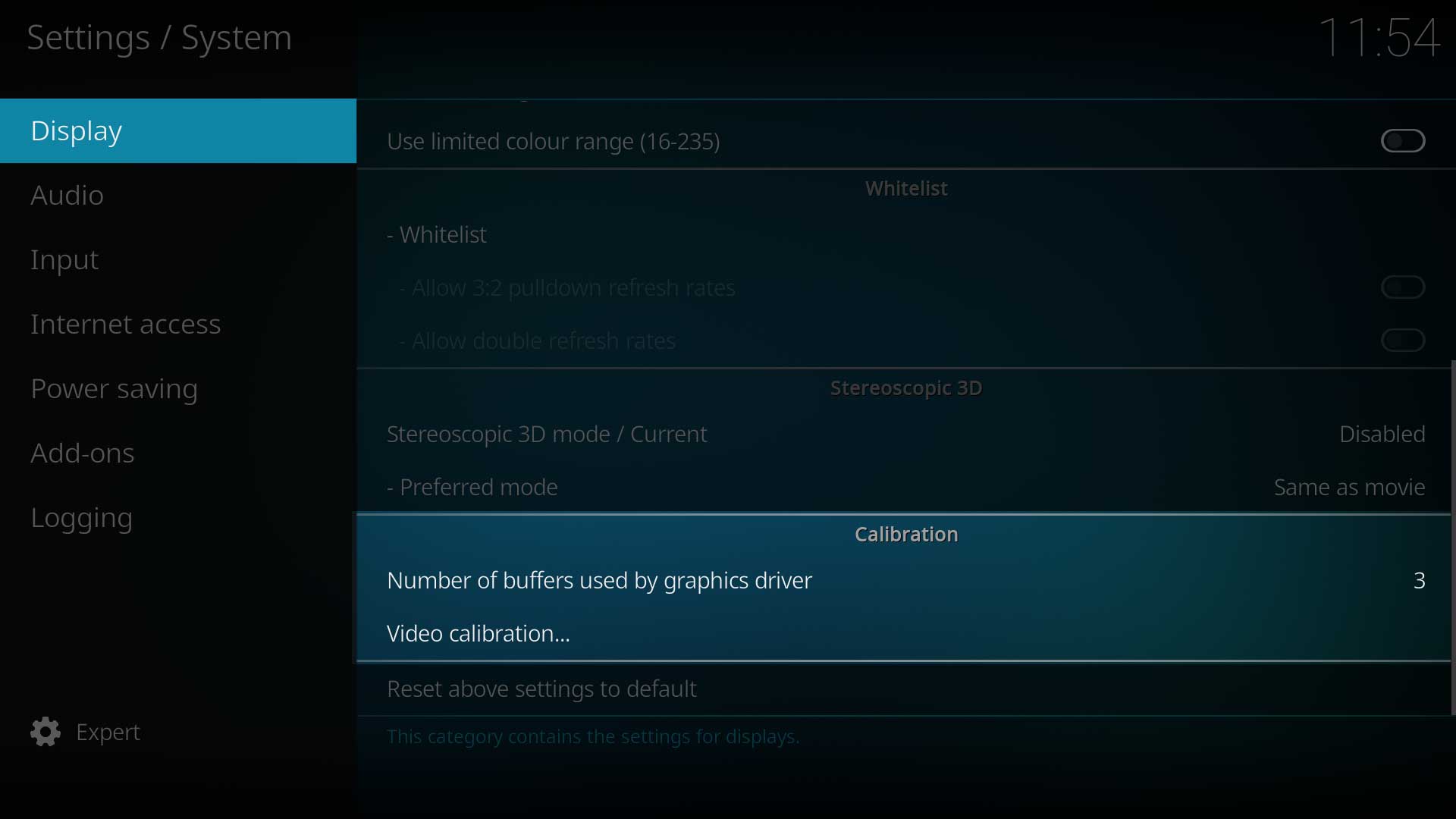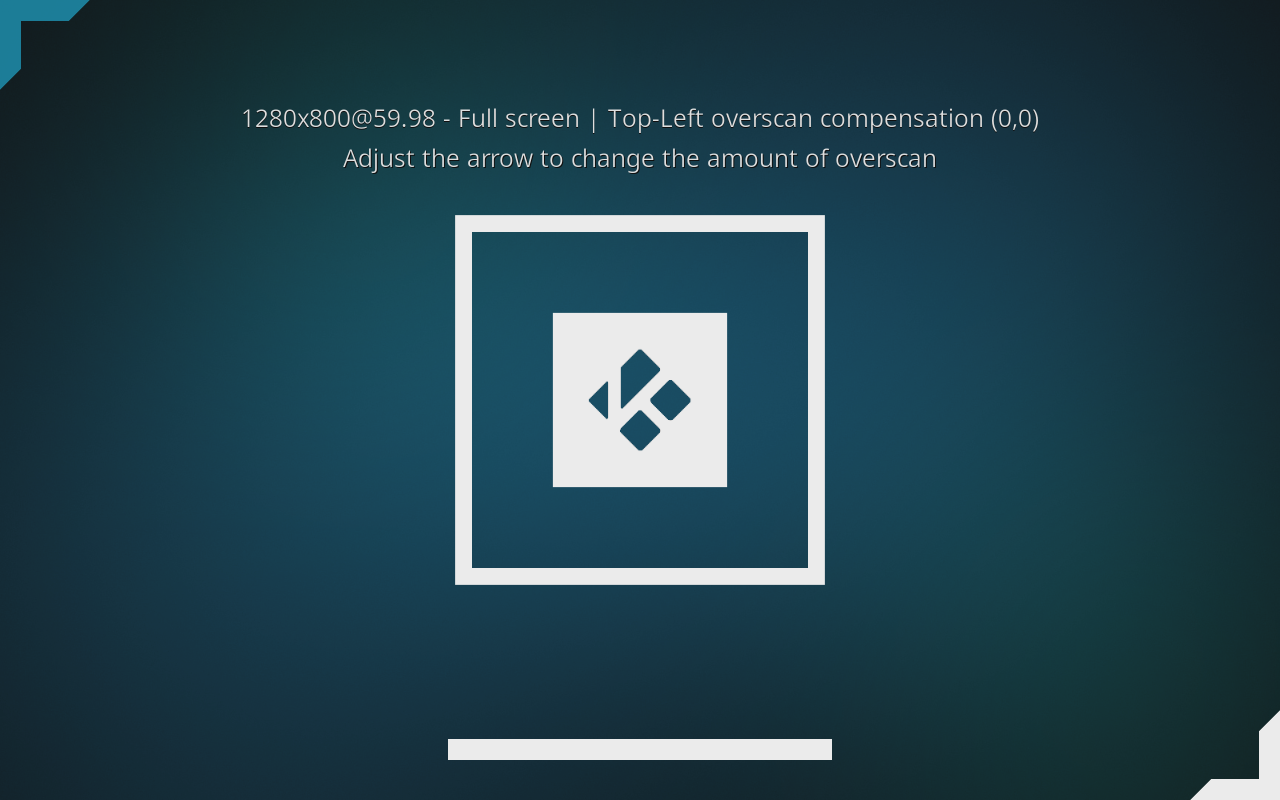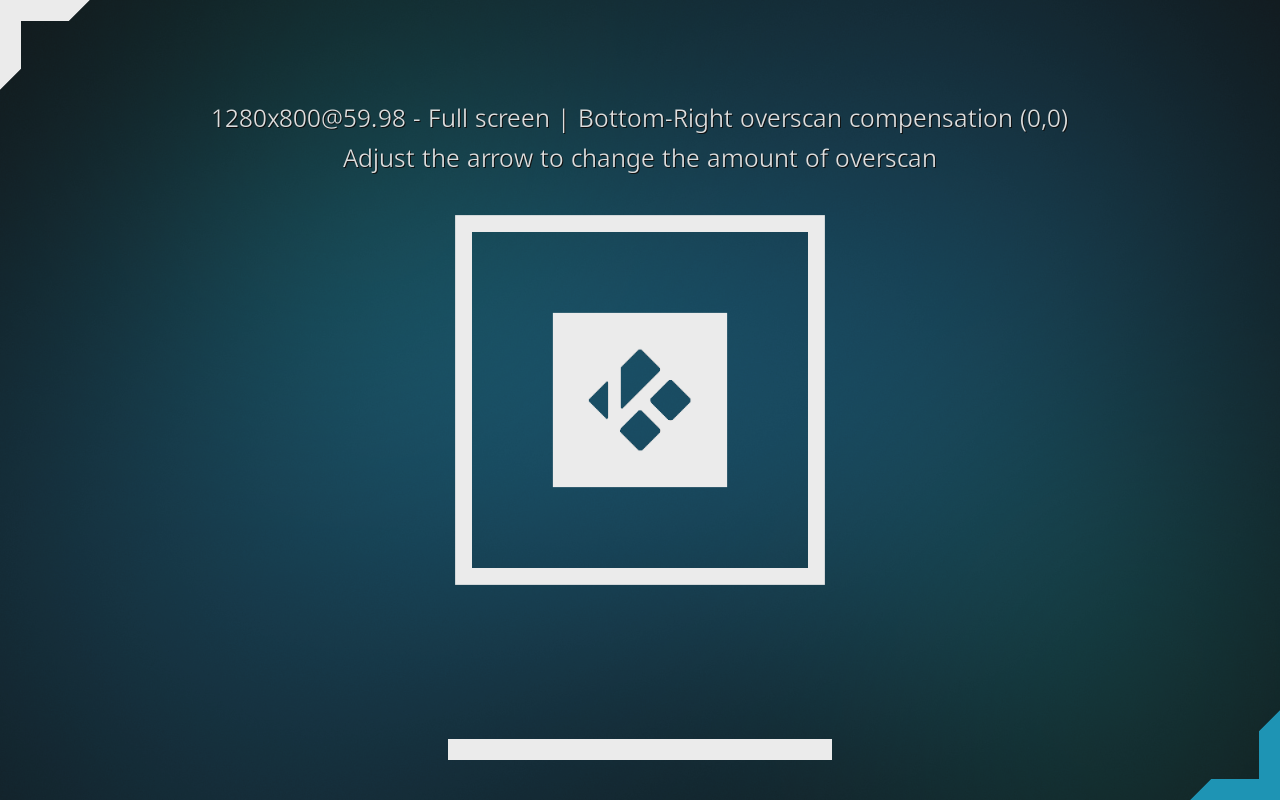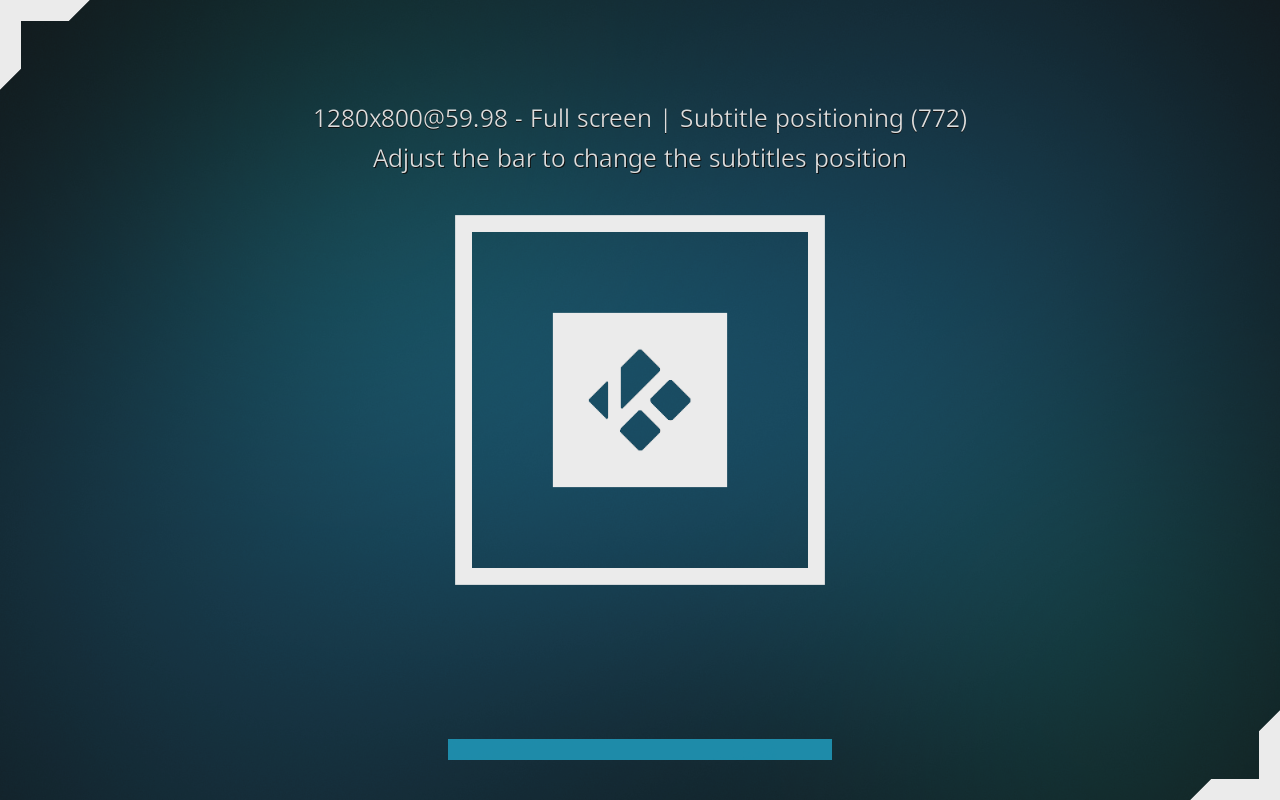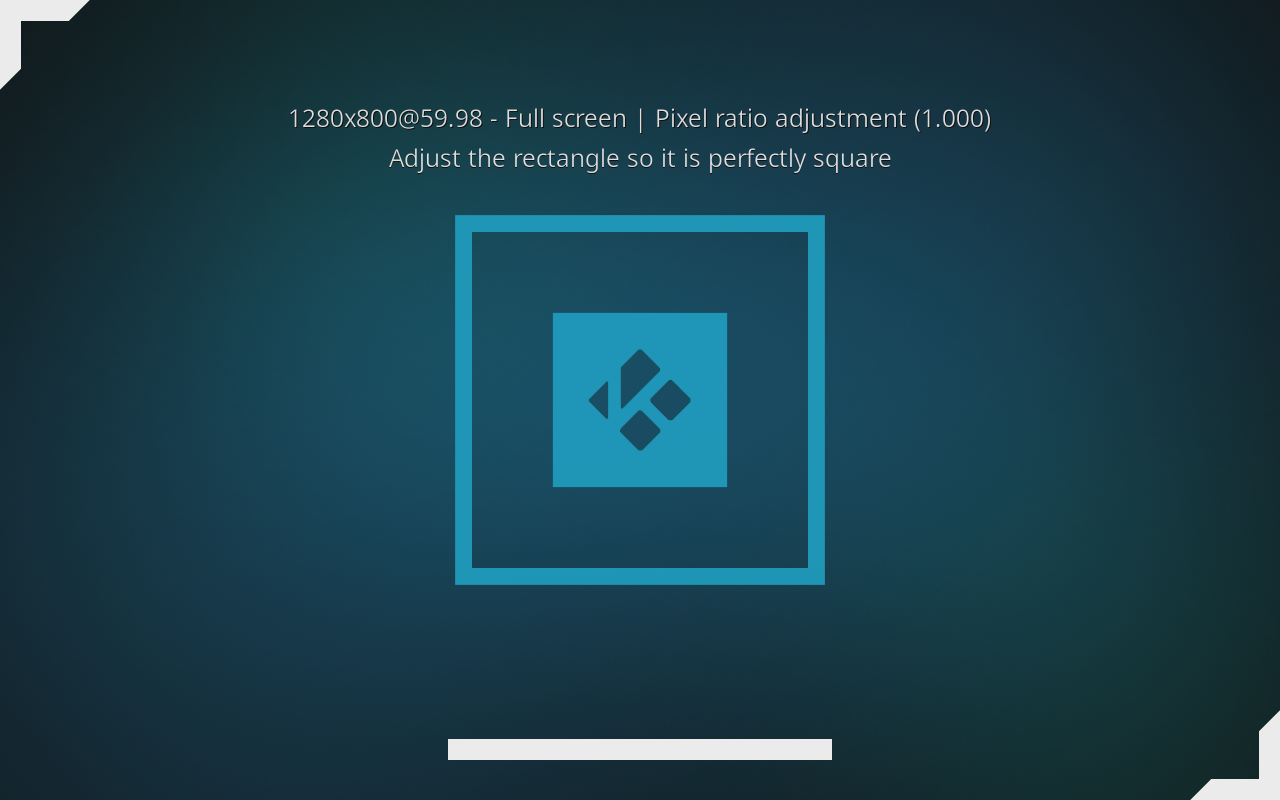Settings/System/Display
General
Monitor
| Settings level: | Basic |
| Description: | Select which screen Kodi is displayed on (for multi-screen setups). |
Display mode
| Settings level: | Basic |
| Description: | Changes the way Kodi is displayed on the selected screen. Either in a window or fullscreen. |
Resolution
| Settings level: | Basic |
| Description: | Changes the resolution of the User Interface. Has no effect on playback. The ideal setting is the highest resolution your hardware supports and/or what the TV/Monitor is capable of. |
Use fullscreen window
| Settings level: | Basic |
| Description: | If enabled, fullscreen mode will be applied by using a window instead of the real fullscreen mode. This mode uses more resources so playback may be less smooth on lower powered hardware. This setting is available when Kodi is installed on MS Windows. |
Blank other displays
| Settings level: | Standard |
| Description: | In a multi-screen configuration, enable this setting to black-out the monitor that is not displaying Kodi. Occurs on Kodi startup and requires a restart of Kodi when changing the setting. |
Delay after change of refresh rate
| Settings level: | Advanced |
| Description: | Delay a reset event after a change of refresh rate. Available options are:
When a Refresh Rate change occurs, there is a period of time when there is no video and audio available. This is defined by the video driver and display device and affects VideoPlayer and PictureViewer and other components. |
GUI peak luminance in HDR PQ mode
| Settings level: | Expert |
| Description: | MS Windows only setting Allows adjustment of the brightness of GUI elements while the display is in HDR PQ mode. This affects all OSD, subtitles and graphics that are SDR in origin. [1] |
Use 10 bit for SDR
| Settings level: | Expert |
| Description: | MS Windows only setting Improves the video quality by using 10-bit video surfaces for Standard Dynamic Range video streams. [2] Available options:
Note: HDR passthrough mode always uses 10-bit regardless of this setting |
Dithering
| Settings level: | Expert |
| Description: | Eliminate banding caused by RGB level conversion or other processing by adding a small amount of noise to the picture. This can be disabled for slower systems, or when Kodi is set to limited range RGB output and no video processing is needed. |
Colour management
| Settings level: | Expert |
| Description: | Reproduce video colours accurately using a display profile or a 3D lookup table. |
Use limited colour range (16-235)
| Settings level: | Expert |
| Description: | Use limited colour range (16-235) instead of full colour range (0-255). Limited range should be used if your display is a regular HDMI TV and does not have a PC or other mode to display full range colour, however if your display is a PC monitor, then this setting should be disabled for correct blacks. If blacks are more like grey, there is a Colour Space error in the Kodi -> Hardware -> TV display chain. Read the following guides to help understand and locate the incorrect setting. |
| See Also: | Setting Correct Colour Space |
| See Also: | Colour Spaces Explained |
Whitelist
Whitelist
| Settings level: | Expert |
| Description: | From the pop-up box, select the resolutions that Kodi is allowed to switch to when a resolution or refresh rate change is required by the content being played.
Whitelisted modes depend on the connected screen/monitor/TV and hardware in use.
|
Allow 3:2 pulldown refresh rates
| Settings level: | Expert |
| Description: | Allow using 3:2 pulldown refresh rates.
Example-
|
Allow double refresh rates
| Settings level: | Expert |
| Description: | Select this option to allow double refresh rates
Example-
|
Stereoscopic 3D
Stereoscopic 3D mode / Current
| Settings level: | Advanced |
| Description: | Set the preferred 3D mode for the User Interface. Available options are:
|
| See Also: | Kodi and 3D |
Preferred mode
| Settings level: | Advanced |
| Description: | Set the preferred mode for when stereoscopic 3D media is played. Available options are:
|
| See Also: | Kodi and 3D |
Calibration
This section provides basic tools that allow you to check and calibrate your display. As the topic of calibration is a complex issue and affects the Screen display and not Kodi it is outside the scope of this wiki. If you are unsure how to use these tools, then an online search should return numerous guides.
Number of buffers used by graphics driver
| Settings level: | Advanced |
| Description: | Defines the number of presentation buffers used by the graphics driver. Select 2 if the driver uses double buffering or 3 for triple buffering. You should consult the vendor for information on which buffering method your system uses. The default setting is 3. If tearing is visible in the display, adjust this setting. Triple buffering is termed Fast Sync by Nvidia. Other vendors may refer to it as Page Flip and Render Ahead |
| See Also: | Graphic Driver Buffers |
| See Also: | Double & Triple Buffering |
Video calibration
| Settings level: | Expert |
| Description: | Calibrate the user interface by adjusting the overscan. Use this tool if the image being displayed is too large or small for your display. Note: Always adjust the TV display settings first. Most issues are due to overscan and similar settings being enabled on the TV/monitor. Trying to adjust this setting in Kodi while these settings on the TV are enabled will have you running in circles and never being able to fix the issue. It offers the ability to adjust:
|
References
| Return to top |
|---|
